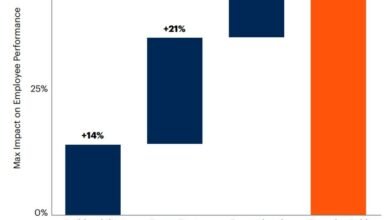
By | Narendra Ambwani | ex CEO Johnson & Johnson | Helping CEO and Senior Leaders Perform Their Best
Covid lockdown posed a huge people management challenge for all the HR leaders. In fact, more than business management, the focus in crisis, was largely on managing people related issues. HR professional played a major role is handling the challenges relating to WFH and stress it caused to everyone.
Now that restrictions are being reduced, the spotlight is shifting to getting offices ready for welcoming employees back to WFO. I believe, the change will be as challenging once again! As a non-HR person, two big issues relating to stresses of WFO, come to my mind. I am sure that many HR Leaders are conscious of these issues and planning to address them. The two issues are interlinked.
1. Infrastructure :
- How will social distance be insured? How many person may attend the office at one time?
- How will screening be done to decide who may be permitted to attend the office? Over 60, pregnant women, co-morbid persons are higher risk, should they be denied access to office? Many senior executives may fall in this category! Are all functions required to WFO? Which functions can remain WFH?
- Many employees with young children (schools closed) or old parents at home, are bound to home, they being without maids and may not be able to attend WFO till crisis is completely over and life returns to normalcy. Will they be allowed flexibility?
- How will the security and health check be performed on all visitors to the office premises? It can be even more challenging, if the premises are in an office tower on a rental.
- How will no-touch be ensured in elevators and all the doors / access points? How will hygiene be ensured on all surfaces, toilets, and wash areas? How frequently? Staff in the office may be reduced to ensure the social distance requirements. It may make frequent hygiene practices more challenging. What about tea/coffee and water dispensing areas which have many different people using and touching the equipment? How will hygiene be ensured? Is there a risk in using central air-conditioning? How can it be minimized?
- Will canteen services be continued or will it be safer to let employees bring home cooked food for safety reasons?
- Will meeting rooms be used? Or restrict use to limited persons at a time? Or use internet based meeting even in WFO?
2. Employees’ concerns
- Coming to WFO may be stressful as it can be seen less safe compared to home. Employees’ fears may be caused by fears of shared transport, exposure to infected or asymptomatic employees/ visitors/ staff or touching surfaces which may have been touched by such persons. How will these concerns be addressed? What kind of on campus testing, medical help, emergency services can be planned to cover risks?
- Employees’ families may also be fearful or concerned about loved ones going to work out side the safety of their homes. How will these be mitigated?
- Employees may also be concerned about their own future as many jobs may be reduced in view of changes in business prospects. They will be concerned about missing the original targets in the business and hence performance bonuses. They may be worried about regular salary payments in view of loss of business during disruption of lockdown period. HR leaders may need to address them in a transparent and honest manner to keep their trust and reduce stress of the employees.
- With Covid situation changing by the day, various areas may get closed from time to time, and declared as Red zone. This may prevent an employee to attend office as requested by the management. Employee may like to be advised on flexibility available to him on such issues.
- Many employees may be asked to continue WFH as new guidelines may allow only 30 % of regular employees to be in the office. What will be the HR policies for such employees? Will they be provided assistance in acquiring office furniture, desktop PC, printers, fast network connectivity services etc. Many employees may be in a small apartments in metro cities like Mumbai, will they be able to spare a part of limited space for converting to WFH set-up. How will HR policies help them?
These are the concerns which come to my mind. I am sure HR leaders will have a deeper understanding and more perspectives of challenges in restart of WFO.
May I invite all HR professional to add value as comments to this article, by sharing their perspectives and suggestions to help employees move back smoothly to WFO?
Originally first published by Narendra Ambwani in LinkedIn.






